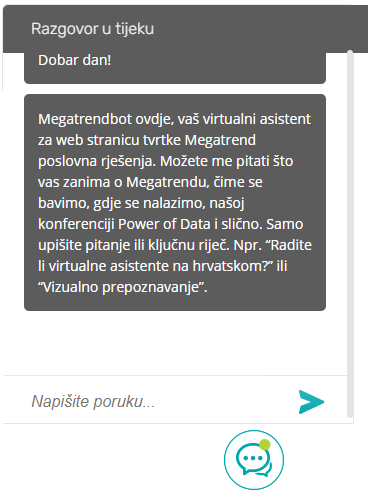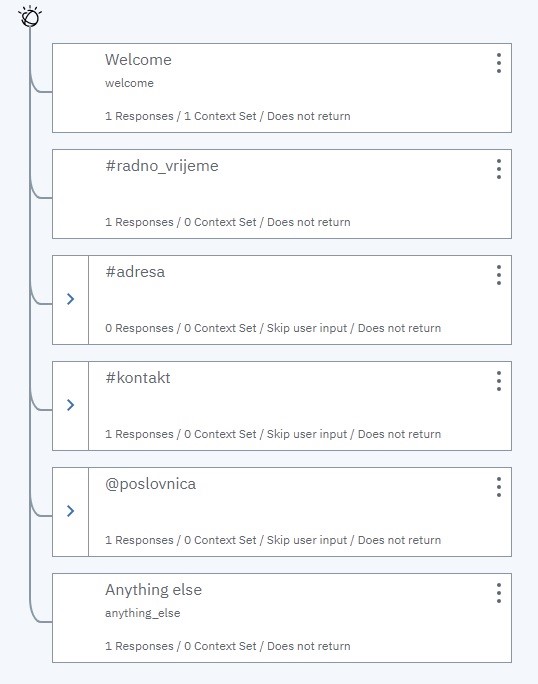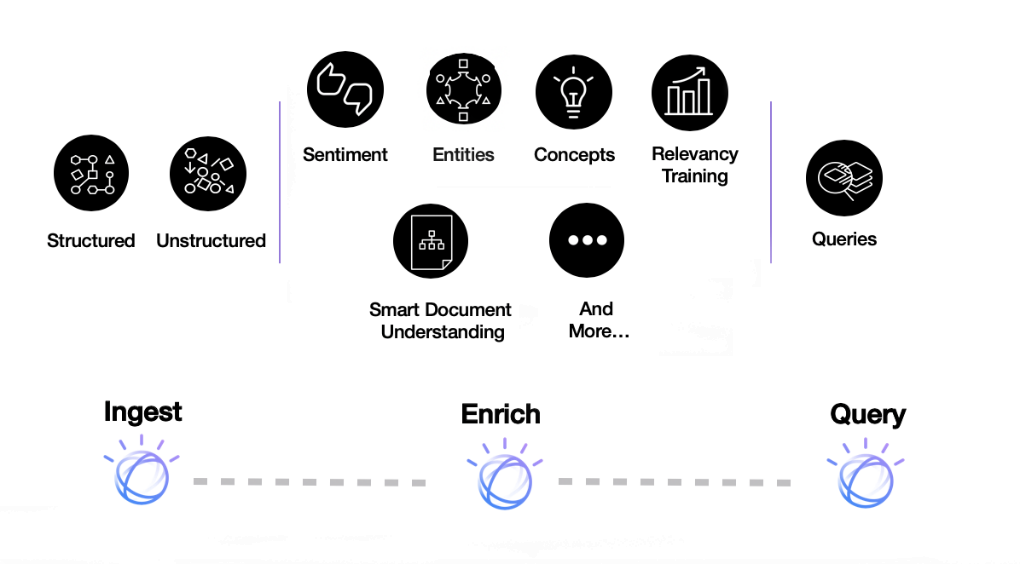Blog ENG
AI Customer Care Ecosystem

With huge amounts of text data available and an increasing number of users, it is increasingly difficult to provide fast and high-quality support to users. With the help of artificial intelligence models and natural language processing, today it is possible to automate a decent part of customer support, either in terms of automating the conversation with the user or finding the most relevant information for the user.
Artificial intelligence is a field which deals with the creation of intelligent systems to help people solve various complex tasks. There are many application areas, i.e. subareas of artificial intelligence. Some of them are computer vision (visual recognition, i.e. detection of objects in images and their classification), predictive analytics (e.g. demand forecasting or detection of risks, threats and fraud) and natural language processing (understanding human languages).
Natural Language Processing (NLP) is a common subfield of linguistics and artificial intelligence whose task is to give computers the ability to read and understand human languages. NLP is used for a variety of purposes, and the most common are sentiment analysis in user satisfaction analysis, virtual assistants for the automation of customer support or as assistance in the intelligent search of documents, and various operations such as summarizing, translating and classifying textual data.
Virtual Assistants
Virtual assistants are today the most effective way to leverage artificial intelligence models to improve and automate customer support. In their most primitive form, ordinary chatbots simulate a conversation with a human agent and serve as an interactive alternative to listing frequently asked questions and answers (which people don’t read anyway) and eliminate a large amount of repetitive questions asked, and if they don’t have an answer, they redirect the user to a human agent.
In addition to this basic functionality, it is possible to incorporate various advanced functionalities into virtual assistants, such as information search engines based on the semantic search of documents, sentiment analysis, i.e. analysis of the user’s tone of speech, additional query classifications and much more. The most effective combination of virtual assistants is an ordinary chatbot that answers questions about the topics it has been taught, with an additional semantic search mechanism – if the assistant does not know the answer, it searches for information relevant to the user’s query in its knowledge base, i.e. collection of documents. Only if this search does not result in any relevant information, does the virtual assistant redirect the user to a human agent. With this, we eliminated a large number of queries, those repetitive simple ones, and even some of the more complex, specific queries.
It is important to note that virtual assistants do not have to be aimed only at external users, but it is possible (and desirable) to place them within the company as well, to assist employees, whether they are employees in the customer support department, so they need a quick way to reach necessary information, or any other employees within the company, who need some general or personalized information (e.g. an internal helpdesk).
Benefits of using a virtual assistant
For users:
- constantly available service (24/7)
- speed and consistency of response
- personalized experience
For companies:
- expense reduction
- user engagement -> increased sales
- better online presence
- help in understanding user perception

IBM Watson
IBM Watson should be highlighted as the world’s leading platform for solving NLP problems and integrating NLP into one’s own business processes. IBM Watson as an artificial intelligence system is popular among organizations in various industries due to its ease of application in their own business environment. In a very simple and quick way, you can develop your own program for assistance in working with data, in which experts from different fields can participate. The IBM Watson platform contains a diverse selection of natural language processing tools, with a smaller or larger scope of their application.
IBM Watson Natural Language Understanding is a service for various NLP operations on data, and their application is the “widest”. It contains many functionalities, and also includes various previously separate IBM Watson services – Watson Natural Language Classifier (a tool for a simple classification of text data), Watson Personality Insights (a tool for analyzing dimensions of personality traits and personal needs and values) and Watson Tone Analyzer (sentiment analysis tool).
IBM Watson Studio is another IBM tool that is applied to use the benefits of artificial intelligence, specifically machine learning on your own data set, but its biggest advantage is the ability to combine different IBM Watson services and external source code into one AI environment.
IBM Watson Assistant + Discovery
IBM Watson Assistant is a well-rounded platform for creating conversational interfaces, i.e. chatbots, that simulate the behavior of a person in a conversation. Watson Assistant is an intuitive tool that allows you to create your own chatbot in just an hour and deploy it in various communication channels, such as Messenger or Slack. All that is needed are examples of user queries that are classified into specific parts of the topic, the so-called intents, and the conversation flow is modeled using a graphical dialog tree.

IBM Watson Discovery is a tool for intelligent semantic search using artificial intelligence. It also represents a platform for text analysis that uses NLP to discover useful data from complex business documents, web pages or large data sets, thus shortening the search time itself. Discovery allows users to add their own sets of documents and applies artificial intelligence algorithms to them that enrich the inserted data by extracting key concepts and entities (such as locations, organizations, people, etc.) and performs semantic analysis on the documents.

After transferring the data and enriching it, it is possible to build queries and integrate Discovery into your own solutions or with other IBM tools such as the Watson Natural Language Understanding service or Watson Assistant. Watson Discovery is implemented in Watson Assistant via the Search Skill (in just a few clicks it is possible to combine these two tools) and allows the virtual assistant to answer complex questions, which haven’t been answered by Watson Assistant, by browsing a large database of documents.
Conclusion
Artificial intelligence and natural language processing are areas that can be used to improve various business processes today, and customer support, which is an increasingly complex task every day, is a perfect example of their effective application. If you want to learn more about virtual assistants, semantic search of documents or the IBM Watson platform feel free to contact the author of this blog post at domagoj.maric@megatrend.com.

